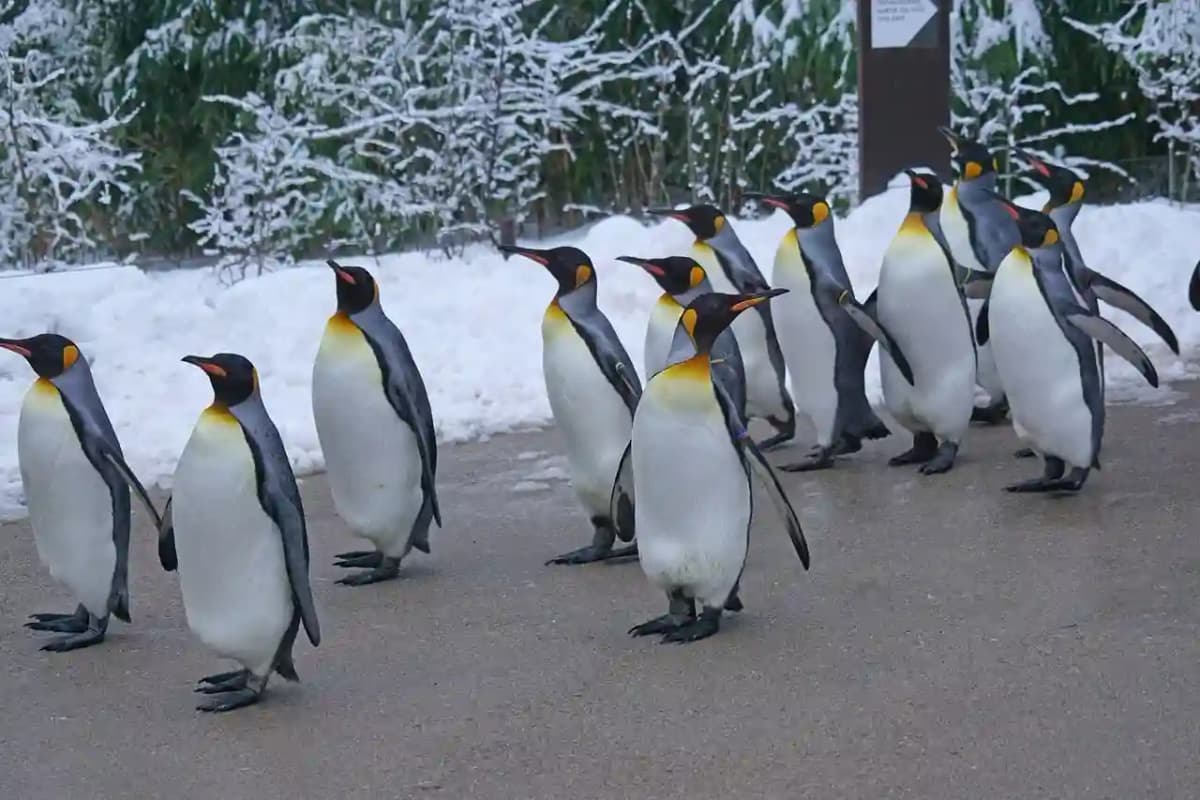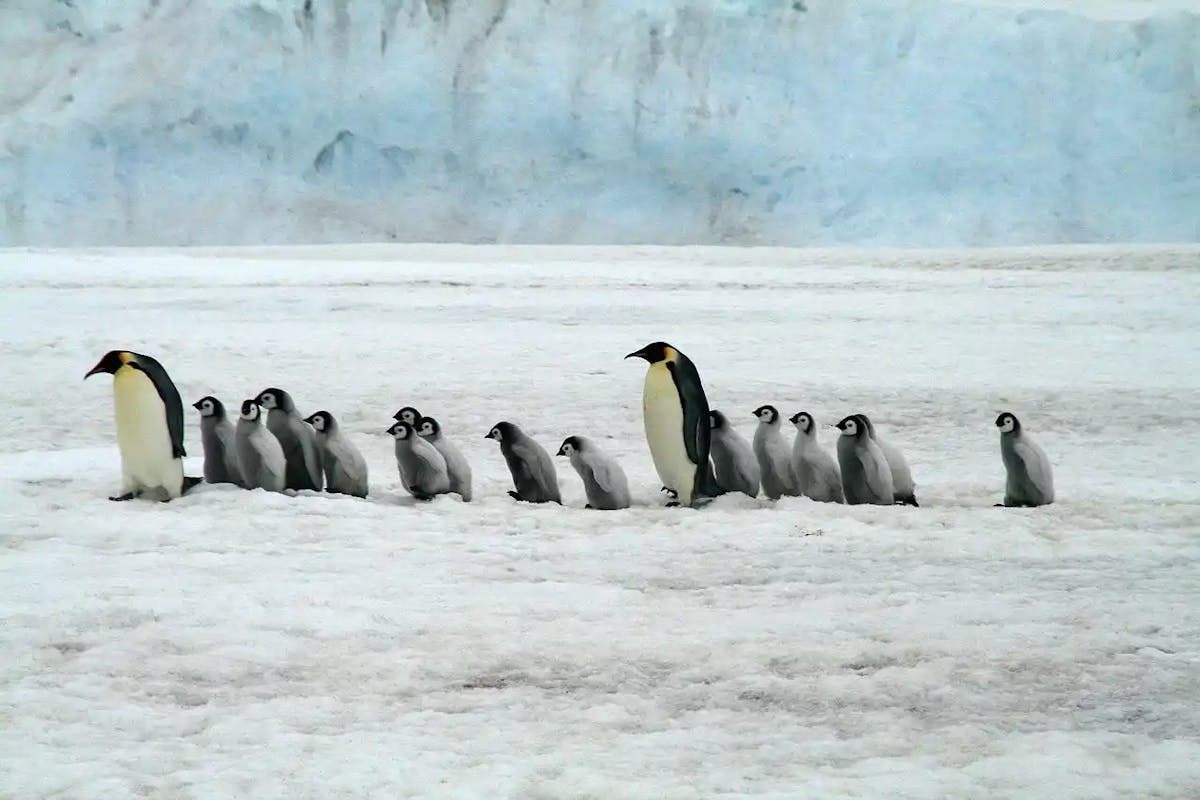Random King Penguins Facts | King penguins are truly majestic with their tall and slim bodies, and they're a breathtaking sight to see! These incredible birds live in the remote subantarctic islands and are built tough to handle the harsh weather. Unlike many other penguin species, king penguins don't build nests. Instead, they carry their eggs on top of their feet, keeping them warm with a cozy flap of skin called a brood pouch. This special way of nesting lets both mom and dad take turns keeping the egg warm while the other goes out to sea to find food. It's like a team effort for penguin parents!
King penguins have a really cool breeding system that's perfectly in sync with the food around them. Here's how it works: After the females lay their egg, they hand it over to the males, who carry it under their bellies until it hatches. While one parent stays with the chick, often getting help from other adults in the group, the other parent goes out to sea to find food. This way, when the parent returns from their fishing trip, they can feed their hungry chick with regurgitated meals. It's like they have a well-organized schedule to make sure everyone gets fed!
10 Interesting Facts About King Penguins
One of the most fascinating things about king penguins is their special way of breeding. Unlike a lot of other birds, they don't make nests or lay eggs in the usual way. Instead, they gather in big groups on ice or rocks, and all the parents take care of the babies together in a big nursery called a crèche. It's like a big penguin family daycare where everyone helps out with the chicks! Also see:- Random Facts about Lions, Random Facts about Llama

Let us see some other interesting facts about the King Penguins:-
- King penguins (Aptenodytes patagonicus) are the second-largest species of penguins, after the Emperor penguins.
- They are native to the sub-Antarctic region, with colonies found on various islands around Antarctica.
- King penguins are excellent swimmers and can reach speeds of up to 12 miles per hour (20 kilometers per hour) in the water.
- Unlike many other penguin species, king penguins do not build nests; instead, they carry their eggs on their feet to keep them warm.
- The incubation period for a king penguin egg lasts about 54 days.
- King penguins have a distinct "grunting" call they use to communicate with their mates and chicks.
- They are known for their striking appearance, with a black back and head, white belly, and bright orange patches on their necks.
- The orange patches on their necks are used in courtship displays to attract potential mates.
- Both male and female king penguins participate in raising and feeding their chicks.
- Their diet primarily consists of fish, squid, and other marine creatures found in the Southern Ocean.
King penguins are not just impressive on land; they're also amazing divers! They can dive really deep, up to 100 meters (328 feet)! To make these deep dives possible, they slow down their heart rate and send more blood to their vital organs, conserving oxygen. This allows them to stay underwater for a long time, hunting for fish and squid that thrive in the cold waters around Antarctica. It's like they have their own superpowers for exploring the ocean depths!
